MEMOIRS OF A DIY HI FI NUT - Part XVIII
P.G.A.H. VOIGT: A Great Audio Inventor
IX
CANADA
In April 1950 Voigt and his wife sailed for Canada leaving The Courts factory on a skeleton basis. He arrived in Canada but could not get a job. Eventually he got one on the Canadian railway. This was followed by various employments including teaching electronics at the Ryerson Institute in Toronto and work in the lab of a tape recording machine manufacturer. He finally ended up employed by the federal Canadian government in the radio anti- interference section.
7
The photograph of Paul and Ida Voigt (below) was taken in Canada in 1953 a few years after they arrived.
Ida Voigt was a fully qualified electrical engineer. She was said to be either the first or one of the first women to have qualified and awarded a degree in engineering. Further details will be provided in due course.
She was of Scots descent and proud of it. She moved to England as a young girl with her family and spoke with an educated English accent.
It would be interesting to learn how she and Paul met and about any involvement in Pauls engineering.
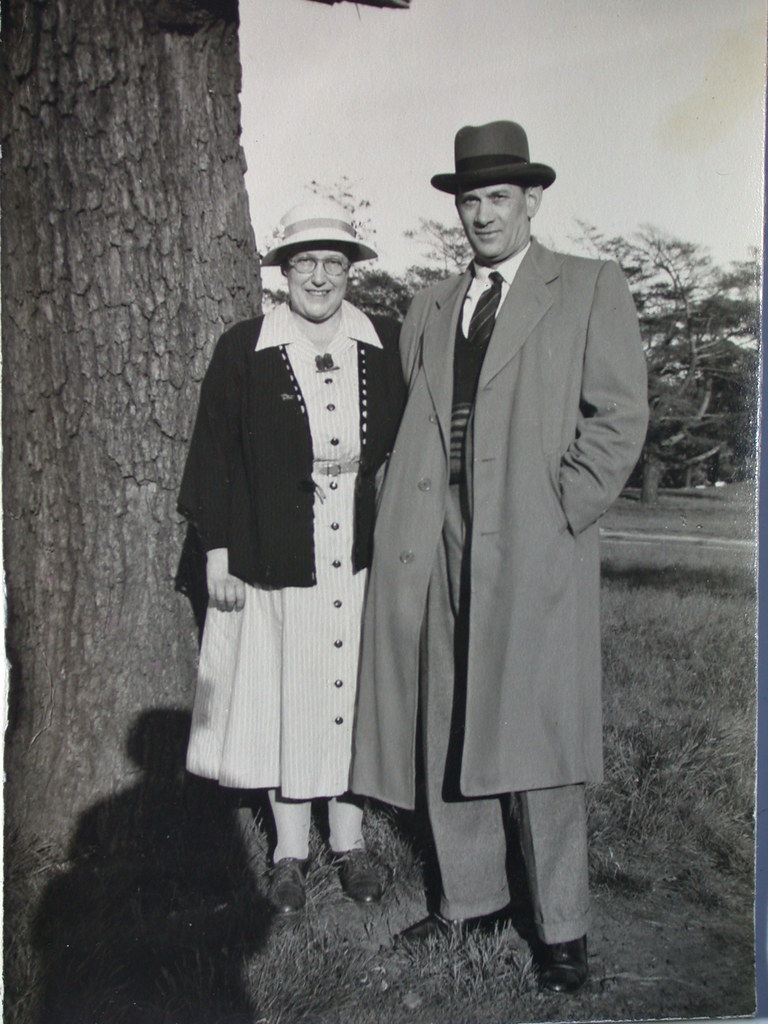 DSCN0865
DSCN0865 by
pulitout, on Flickr
BARBARA VOIGT- interviewed by Eric Stubbes June 2012 (edited and amended).
I am most grateful to her for taking the time and trouble to contribute so much to the memory of Paul Voigt. I have her permission to publish this interview. Personal information about Paul Voigt is in short supply- especially in connexion with his life in Canada- so it is very welcome to have a contribution from Barbara Ann Voigt.
Q.1. I first met Paul Voigt sometime between 1979 and 1981 when we were visiting Brighton for a weekend. (At that time we were living north of Toronto). We visited with both he and Ida, and I remember meeting with them at the camp site where we were staying. There was some sort of BBQ going on that evening and there was music. The only thing I clearly remember is that Paul danced with me!!!!! He was wearing grey flannels and a sports jacket with shirt and tie a typical English gentleman, and dress wise, didnt fit in with the camping crowd who were dressed casually in shorts or jeans with T shirts or casual shirts.
Q.2. We met him again on subsequent visits to Brighton at weekends and enjoyed tea with them at their house on Huff Road. I dont know what his interests were or how he spent his days.
Q.3. No idea, as far as I know, he kept very much to himself and didnt socialise.
Q.4. No idea of his hobbies. He didnt do any gardening that I know of, certainly no flowers or vegetables, he didnt use weed killer on the grass as he thought it was bad for the environment, thus the use of nail scissors. He did absolutely no household chores that in his eyes was womens work!
I do know that he drove Ida to distraction sometimes, when he spent many hours in the summer months digging up weeds in the lawn with a pair of nail scissors when there were 101 other things he needed to be attending to!! He was a very conservative British gentleman, and wouldnt allow Ida to drive
rather inconvenient for her, as Huff Road is some 2 miles from Brighton town centre and she had no way of getting there other than Paul driving her!! Frustrating for her at times.
Q.7. He didnt have a TV
.. but he probably had a radio can offer no further help on this one.
Q.8. He didnt travel at all (that I know of) either overseas or in Canada, apart from visiting us once at Christmas when we lived north of Toronto back in 1979. On thinking it over, he did honeymoon in Budapest and that was combined with some sort of business. I cant elaborate any further on that one
recalling conversations etc.: that happened 17 and more years ago is not easy. Not being a member of the Voigt family (except by marriage) I didn't know the backgrounds and history of Paul and Ida. I do know that they were very uncommunicative and didn't keep up with any of the family back home after they came to Canada. They never returned to the UK, not even for Paul's mother's funeral. They were private isolated people who liked to keep themselves to themselves.
Q.8. Paul and Ida certainly didn't honeymoon in 1979, by then they were 78 and 79 years old respectively. Maybe I wasn't very clear in my answer on this one, 1979 is the year that I emigrated from the UK together with my husband and 2 sons. At some time - and I've no idea when - Ida mentioned to me that the only place she had been to was Budapest on her honeymoon ..... as I have no idea the date she was married, I do not know the year of the honeymoon.
Q.10. When we moved to Huff Road in 1987, there was a part finished Corner Horn in the basement. I presume that Paul built it, but have no photos or serial numbers of it. When we moved from Huff Road in 1995 my husband only had weeks to live
.. I really have no idea what happened to it
sorry
.
Q.11. The Corner Horn that he had was unfinished, so therefore unused. He had many gramophone records which I believe were his original recordings, but Im too hazy on this one and am unable to elaborate any further.
Q.11. the Corner Horn that we had in Huff Road was situated in the basement. The outside was made of light coloured unfinished wood, and stood about 4' high, extending from the corner along the wall for about 20 in either direction. I don't know what - if any- workings were inside it. I only know that my husband intended to get it up and running at some time. Ida didn't specifically say anything that I can remember about it..... I think she probably hoped that we would get it operational some day - but that is only my opinion. At the time of my move from Huff Road in 1995, my husband was so ill he was unable to help in any way that I had to undertake the whole operation on my own. I really have no idea what became of the Corner Horn, at that time I had more important things to worry about..... because of the situation at that time, quite a few things went "missing" .....
Q.12. No idea on temperature or weather. No heating in the house, and none that I know of in the workshop.
Q.14. Paul was very absent minded and in my opinion, not at all considerate particularly of Ida.
Q.15. Did he do any walking for pleasure (i.e. more than, say sort walks of 100 yards)?] Ans. "No".
Q.19. His workshop was in a state of disrepair when I saw it, I never went inside, quite frankly it was falling down. It must have been several years since he had used it.
Q.23. Very basic old fashioned furniture, not much of it. No running water had to draw water from a well on the property. No electricity propane gas. Purely a summer residence. dug outside toilet. All very run down
.
Q.23. Paul and Ida only lived at Huff Road in the summer months due to the lack of amenities. In the winter, they rented a house in town from a friend who lived in Toronto and only used it as a summer place. Actually it was on the same street on which I now live - Prince Edward Street. Several years ago circa 2000 it was demolished along with 2 or 3 others to make way for a small shopping plaza.
Q.26. Ida did not speak with either a Scottish or an Irish accent. She spoke with a very cultured voice as one would hear in the S.E. of the UK. She was certainly of Scottish origin, but moved down south (I think) when she was quite a young girl. I have no idea which area or city in Scotland she originated from. She was proud of her heritage.... not a lot of help I know, but the best I can do.
Below: 50th anniversary: Ida & Paul Voigt- 11.08.78, Canada
 DSCF4414
DSCF4414 by
pulitout, on Flickr
Below: Christmas 1979: Paul & Ida Voigt in Canada with their great nephews Philip and Andrew- sons of Richard & Barbara Voigt
 DSCF4415
DSCF4415 by
pulitout, on Flickr
BELOW SEE RARE PHOTOS of Voigts summer home at Huff Road, Brighton, Ontario, Canada.
 S0047015
S0047015 by
Round Person, on Flickr
TOP LEFT: Front view of the House. Pauls workshop is behind the tree on left. The little structure with roof is a cover over the water well.
TOP RIGHT: Side view of the property looking south.
BOTTOM LEFT: Side view of the property looking north.
BOTTOM RIGHT; View from top of garden. You can just see Lake Ontario in the background.
All the prints are stamped in red ink on the back Kodachrome print made by Kodak 68T or APR ART except TOP LEFT which is stamped JULY 68T.
Narrative is handwritten on the back of each print by BARBARA VOIGT (Acknowledgement No.11 below). Date of inscription not known.
Copies of these prints were made by me on 27.5.13 using a FUJI X10 digital camera in natural daylight with the camera set on EXR/resolution priority.
_________________________________________________________________
Paul and Ida lived at Huff Road only during the summer months due to lack of amenities. During the winter they rented a house on Prince Edward Street, Brighton, Ontario. This house was demolished circa 2000 to make way for a small shopping plaza.
 SC MSS 170 1 82 4 page 1
SC MSS 170 1 82 4 page 1 by
Round Person, on Flickr
see ACKNOWLEGEMENT 13 + FOOTNOTE
17
Voigt tried to develop an export trade but the Canadian venture failed in the mid 1950s. He lived in Canada for the rest of his life.
Peter Walker and Paul Klipsch paid tribute to Voigt in a JAES obituary.
12
I think that the worlds hi fi has been better as a result of P.G.A.H. Voigt. I have been proven wrong about things before but I doubt that I shall be proven wrong about this.
The questions that remain in my mind are: if Voigts parents had not sent him to an excellent school would he have accomplished what he did? And also: how many exceptional people have not fulfilled their promise because of poor schooling?
FOOTNOTES
1. Letter of 19.7.57 to Mc.C. Christison (Dulwich College Archives).
2. Letter of 17.4.36 to The Allenian (Ibid.).
3. Photo taken 1967. Inspection of the Electoral Register for 1947 does not identify the house number for The Courts, Silverdale nor is the name Voigt listed. The reason for this absence may well be because Voigt rented the premises. His landlord was "the local department store" (
sic).
14 The factory moved to No.15 Silverdale in March 1945 (see ref: 101 below).
4. Paul Voigts contribution to Audio, British Kinematography, Sound and Television 52, p.316-327, Oct.1970.
5. Photo of Voigt (date unknown) shown with early Lowther-Voigt driver and horn.
6. Address by Voigt to the British Sound Recording Association on their 21st anniversary in September 1957. The full text of this address is available online.
7. See Speaker Builder 4/81, p.22 for ads originally published in The Gramophone in 1937 and for his Canadian career; see also REFERENCE #11 (obituary).
8. Information for this part is derived from an interview with JOHN GILBERT recorded in May 1984 (Tape C90/54/01 in the British Library Sound Archives). The P.O. Commercial Directories for 1923 and 1927 shew that the J.E. Hough Ltd. factory (later Edison Bell factory) was at 62 Glengall Rd. The photos are from a booklet entitled The Story of Edison Bell. This factory was established in 1903 and demolished in the 1960s. The site is now a wasteland (April 2010). A lot of recollection from Voigt in his Hough/Edison Bell days, in his own words, came from letters from Canada (see Paul Voigt and Edison Bell, by Percy Wilson, the Gramophone, Nov.1965, p.269, & Dec 1965, p.326.
9. See Speaker Builder issue 2/1981 for an excellent article on Voigt. See, also, SB issue 3/1981. Dr. Bruce Edgar has done a magnificent job.
10. The information in this section was obtained from Tape C90/63/01 in the British Library Sound Archives- an interview with DONALD ALDOUS, recorded Sept. 1984.
11. Sound Reproduction, Proceedings of the British Kinematography Society#7, 4 January 1932 gives some background.
12. Journal of the Audio Engineering Society, VOL 29-4, April 1981, p.308. [Obituary by Geoffrey Wilson and Paul Klipsch].
13. See Reference #18 (below).
14. Letter dated 12 Jan1972 to Thomson of the BSRA (re: Blumlein), IET Archives (Institution of Engineering and Technology, London).
15. Letter to Seymour, 3&4 Dec. 1979, Brighton, Ontario, Canada, IET Archives.
16. Information in this paragraph provided by Bjarne Rasmussen (May 2014).
17. IET ref: UK0108 SC MSS 170 1 82 4, p.1. Permission to use IET Archive image acknowledged.
18. After Voigts death Ida Voigt gave photos, Voigt's diaries, design drawings and other items to Bruce Edgar. Edgar later sold these to John Howes. Howes gave the photos to B.G. Rasmussen.
REFERENCES
1. Interview with Dr. Bruce Edgar, Positive Feedback 1996.
2. Hi Fi World, London, June 1994, p.58.
3. P.G.A.H. Voigt, Address to the British Sound Recording Association, Sept. 1957.
4. Sound Practices, Austin, Texas, Winter 1994-5, Vol 2:4 , issue 8, p.11-23.
5. Cabinets For Speakers-II, P. Wilson, The Gramophone, Jan 1937, p.354 [Voigt corner horn discussed].
6. Tape C90/63/01 NP1046WR- British Library Sound Archives.
7. Tape C90/54/01 NP10398WR- British Library Sound Archives.
8. Speaker Builder, Peterborough, New Hampshire, U.S.A. 2/81, 3/81, 4/81 article by Dr. Bruce Edgar.
9. Sound Reproduction, Proceedings of the British Kinematography Society #7, 4 January 1932.
10. Dulwich College Archives.
11. Journal of the Audio Engineering Society, vol. 29-4, April 1981, p.308 obituary.
Wireless World:
11A. [REPORT], Wireless and Experimental Association, (Voigt read paper Re: losses in inductance in wireless plant; also described an ingenious switch for connecting head gear telephones in series or parallel), Aug 7, 1920, p.354.
11B. [REPORT], Wireless and Experimental Association, (Voigt traced transformation of energy from electrical to mechanical circuits and demonstrated advantages of having telephones of the same resistance as the crystal detector), Nov. 13, 1920, p. 586.
11C. [REPORT], Wireless and Experimental Association, (Voigt read a paper on inductances and how he obtained unusual efficiency), Feb 19, 1920, p.812.
11D. [REPORT], (Voigt cleared up points about pancake coils and their use), March 19, 1921, p.872.
12. Voigt [REPORT], Wireless and Experimental Association, (lecture by Voigt on the construction and use of logarithm tables), April 16, 1921, p.54.
13. Voigt (REPORT], Wireless and Experimental Association, Mr. Voigt elected to represent the intermediate junior members, June 11, 1921, p.175.
14. Voigt [REPORT], Wireless and Experimental Association, Mr. Voigt dealt with electrostatic attraction between metals and semi insulators, July 23, 1921, p.270.
15. Voigt [REPORT], Wireless and Experimental Association, Voigt wanted to know if any substance was an insulator at 200 degrees C, Oct 15, 1921, p.454.
16. Voigt [REPORT], Wireless and Experimental Association, Voigt elected Installation Engineer, Oct 29, 1921, p.487.
17. Voigt [ARTICLE] Simultaneous high and low frequency amplification, Dec. 10, 1921, p.560-562.
18. Voigt [REPORT], Wireless and Experimental Association, Voigt dealt with whether a three- plate condenser changed capacity if the middle plate changed its position, Dec 10, 1921, p.576.
20. Voigt [REPORT], Wireless and Experimental Association, Prize for competition describe the best wireless telephone transmitting circuit. Prize divided between Voigt and Kloots, Dec 24, 1921, p.606
21. Voigt [ARTICLE], Further Observations on Simultaneous HF and LF Amplification, May 27, 1922, p.249-252.
22. Voigt Loud Speaker Curves and their Interpretation, 25 Nov 1932, p.474 and 2 Dec 1932, p.500
23. Voigt Loud Speakers, Sept 29,1933 ,p.274
24. Voigt [ADVERT](Tractrix Horn 4 ft.)21 Oct 1932, p.5.
25. Voigt [TRADE NOTE] Voigt Patents is moving, W.W. July 21, 1933, p. 43.
26.Voigt Loud Speaker [ADVERT+PHOTO+SPECS], 25Aug 1933, p.11
27. Voigt ]ADVERT](Public Address Loud Speaker), 6 Oct 1933, p.2
28. Voigt [LETTER]Double Channel Transmission, 13 Oct 1933, p.310
29. Voigt [LETTER] Loud Speaker Response Curves , 8 Dec 1933, p.451
30. Voigt [ADVERT]Calibration Services [ADVERT] 15 Dec 1933, p.10
31. Voigt Domestic Model Loud Speaker, 2 Feb 1934, (inside front cover)
32. Voigt [REVIEW] Twin-diaphragm Loud Speaker, 9 Mar 1934, p.169
33. Voigt [ADVERT](Horn Loud Speaker & 2 ft. mouth), 16 Mar 1934, p.3
34. Voigt [REVIEW]Loud Speaker- new diaphragm) 25 May 1934, p.360
35. Voigt Loud Speaker at Dirt Track [360degree outdoor horn+photo], July 6, 1934, p.14
36. Voigt [LETTER]Transients,10 Aug 1934, p.112
37. Voigt [REPORT+PHOTO] Protected Loud Speaker,, 24 Aug 1934, p.178
38. Voigt Loudspeakers [ADVERT with extensive comments + photo] 14 Sept 1934, p.7
39. Voigt 'Weakest Link' [ADVERT for demos] 16 Nov 1934, p.15
40. Voigt [LETTER], Film Recording, 30 Nov 1934, p.448
41. Voigt [ADVERT](Announcement of Bass Chamber), 14 Dec 1934, p.17
42. Voigt Construction etc. of Domestic Loud Speaker + diagram of choke [ANONYMOUS ARTICLE PROBABLY WRITTEN BY VOIGT+ photo of internal with front panels removed] 28 Dec 1934, p.561
43. Voigt [ADVERT] re: distributor for corner horn+ PA protected unit +photo, 11 Jan 1935, p.11
44. Voigt [ADVERT] intermediate unit (4x10 7 Erg3/SEC.) 15 Feb 1935,p.13
45. Voigt [ADVERT- P.B.T.D.F.S. test for PA system] 15 Mar 1935, p.7
46. Voigt [ADVERT-No single response curve is adequate + photo of corner horn in corner] 10 May 1935, (inside back cover)
47. Voigt [ADVERT] Home Constructors Corner Horn+photo, 7 June 1935 (inside back cover)
48. Voigt [LETTER] High Fidelity, June 7, 1935,p.577.
49. Voigt [ADVERT] PA centering device+photo, 28 June 1935, p.6
50. Voigt [ADVERT] diaphragm with increased middle register- 12 July 1935, p.8
51. Voigt [ADVERT] Double Power Centering Devices-19 July1935, p.3
52. Voigt [ADVERT] Olympia demo: organ music down to 32Hz, 6 Sept,1935,(back cover)
53. Voigt [ADVERT]- Defence of Voigt Loud Speaker (written and signed by Voigt), 22 Nov 1935, p.9
54. Voigt [ADVERT]- Corner Horn Cabinet designed by J.H. Butler, Esq.] 13 Dec 1935,p.7.
55. Voigt [NEWS] 4ft square horn, Mar. 15, 1936, p. 308.
56. Voigt [LETTER] Shutdown of the Little Nationals transmitter, Apr. ?, 1936, p. 350.
57. Voigt Sound Distribution in PA work (Some Acoustic Considerations Affecting the Placing of Loud Speakers) [stresses the importance of Phase] 20 Mar 1936, P.293
58. Two Channel Reproduction[stereo demo at Institution of Electrical Engineering] 10 April 1936, p.363.
59. [NEWS] outdoor PA speaker (P. Voigt? hosing down speaker w. mains applied), July 17, 1936, p.?
60. Voigt [ARTICLE] Cabinet or Baffle ? (Discussion of resonance vs. Voigt domestic horn}. Aug. 28, 1936, p. 201-202.
61. Voigt 'Television Interference', 11 Sept 1936, p.292
62. Voigt 'Collaborating With the Architect, Feb 5,1937, p.118.
63.[NEWS] Voigt PA speaker, Feb. 15, 1937, p. 139.
64. Voigt [REVIEW] Voigt, HC Horn [simplified design; cutoff 60Hz but goes down to 40Hz +photo] 26 Feb 1937, p.212
65. Voigt [LETTER] Horn- loaded Moving Coil Loud Speakers (covers baffles, diaphragm, velocity, load, efficiency, corner horn) 26 Mar 1937, p.308
66. Voigt [LETTER: Horn loaded MC Speaker (again) re: baffle air loading/impedance/beaming] 28 May 1937, p.524
67. Voigt [LETTER: Horn- loaded MC Speaker (yet again); wood v. concrete; bonding wood to concrete] 11 June 1937, p.566
68. Voigt [LETTER] Transient Response (Real and Fictitious Transients
), 30 July1937, p.90.
69. [ADVERT/NEWS], (Interesting cabinets. Display of Voigt/Lowther special order, beautiful system), Aug. 6, 1937, p. 127.
70. Voigt [LETTER] Transient Response (response), 3 Sept 1937, p.250.
71. Voigt [LETTER], Voigt replies again,(more thorough reply of transient response, a "thread" of many reader letters), Oct. 15, 1937, p. 390-392.
72. Voigt [LETTER] Volume (Range) and Quality, 3 Mar 1938, p.199.
73. Voigt [ADVERT] (Voigt speaker demo during audio show), Aug. 25, 1938, p. 103.
74. [LOWTHER], (beautiful, massive receiver with all bells and whistles, looks like a marine radio), Sep. 15, 1938, p. 103.
75. Voigt [LETTER] Broadcast Frequency Tests, 13 Oct 1938, p.335
76. Voigt [LETTER] Pick-up Resonances, 17 Nov 1938, p.446
77. Voigt [LETTER] Is U-S-W Quality a Myth?, 5 Jan 1939,p.19
78. Voigt [ADVERT] Light Coil Twin Diaphragm, 5 Jan 1939, p.8
79 Voigt [REVIEW] Light Coil Twin Diaphragm, 9 Mar 1939, p.223
80. Voigt [ADVERT] Demonstration Week, 9 Feb 1939, p.2
81. Voigt [ADVERT] Deferred Delivery Account, 23 Feb 1939, p.5
82. Voigt [ADVERT] A Modern Minstrel, 9 Mar 1939
86. [Test of Voigt TWIN DIAGHRAM LOUDSPEAKER with 4 ft. horn], March 29, 1939, p.318
87.Voigt [ADVERT] P.A. for Hire, 27 April 1939, p.7
88.Voigt [ADVERT] Modern Minstrel Tours, 4 May 1939,p.1
89. Voigt [ADVERT] Deferred Delivery Made Easy, 18 May 1939, p.2
90. Voigt [ADVERT] H.C. Horn + Bass Chamber, 8 June 1939, p.3
91. Voigt [LETTER] High Quality Recordings, 13 July 1939, p.40
92. Voigt [ADVERT] (listen to a Voigt speaker) 17 Aug 1939, p.2
93. Voigt [LETTER] Reproduction Levels (of interest to flat dwellers), 24 Aug 1939, p.183
94. Voigt [ADVERT +CARTOON] Mr. Tit, 24 Aug 1939, p.17
95. Voigt [ADVERT+PHOTO] Home Constructors Corner Horn, Nov 1939,p.15
96. Voigt [ADVERT] permanent magnet v. electro-magnet, Dec 1939, p.17
97. Voigt, P.G.A.H. Loudspeaker Damping, Dec.1947, p.487-8
98. Voigt Permanent Magnet Loudspeaker, March 1949, p.103
99. Voigt [ADVERT] Beat the Blackout (advice on equipment to use with Voigt loud speakers), Jan 1940,p.14
100. Voigt [ADVERT] (2 watts is enough for the home), Feb 1940, p.13
101. Voigt Getting the Best From Records: Pt.1, The Recording Characteristic, Feb 1940, p.141
102. Voigt Getting the Best from Records: Pt.II, The Pick up, Mar 1940, p.177
103. Voigt [ADVERT] Experimental MC pickup, Mar 1940, p.13.
104. Voigt Getting the Best from Records: Pt.III, Tone Correction Circuits, April 1940, p.210
105. Voigt [ADVERT] (Re: new pickup armatures), April 1940, p.11
106. Voigt Getting the Best from Records: Pt.IV, The Record has the Last Word May 1940, p.242.
107. Voigt [ADVERT+PHOTO] D.C.Twin Diaphragm Speaker, May 1940, P.35
108. Voigt MC Pickup [REVIEW +PHOTO+DIAGRAM], June 1940, p.301
109. Voigt [ADVERT] Development of Needle Restoring Force equipment, July 1940, p.11
110. Voigt [ADVERT+CARTOON] (low output pickup needs extra valve), Aug 1940, p.9
111. Voigt [ADVERT+SPECS FOR PICKUP], Sept 1940, p.10
112. Voigt [LETTER] Appreciation of Quality, Oct 1940, p.441
113. Voigt [ADVERT] (more pickup specifications), Oct 1940, p.12
114. Voigt [ADVERT+PHOTO] MC pickup, Nov 1940, inside back cover
115. Voigt [ADVERT] Moving Coil Pickup (with spec on reproducing point stiffness), Jan 1941, inside back cover
116. Voigt [ADVERT] 2 ft. Mouth Horn (for limited space), April 1941, p.15
117. Voigt ]ADVERT] Voltage Regulator (£5), Dec 1941, p.20
118. Voigt [ADVERT] (Our Post War Delivery Scheme), May 1942, p.20
119. Voigt [ADVERT] (Our Post War Delivery Scheme), July 1942, p.20
120. Voigt [ADVERT] (Save to Spend; why not!) Aug 1942, p.23
121. Voigt [ADVERT] (possible cancellation of names on our Pick-up waiting list), Oct 1942, p.24
122. Voigt [ADVERT] (Voigt wish: a Victorious New Year and a return to the good things in life), Jan 1943, p.32
123. Voigt [ADVERT] (for high quality loud speakers when the good times come again), Mar 1943, p.30
124. Voigt [ADVERT] (we shall be closed for rest- +cartoon), Sept 1944,p.28
125. Voigt [ADVERT] (moving to No.15 Silverdale- +cartoon, Mar 1945, p.26
126. Voigt[ADVERT] (Look forward to private enterprise again free to lift life above the utility level), May 1945, p.31
127. Voigt [ADVERT] (We look forward to the right to go ahead in our own way and improve the standard of reproduction), Sept 1945, p.26
128. Voigt [ADVERT] (+political message), Jan 1946, p.34
129. Voigt [ADVERT] ( apologies: our post war plans frustrated), Mar 1946, p.30
130. Voigt [ADVERT+CARTOON](please dont write, phone or call), Sept 1947, p.40
131. Voigt [ADVERT+CARTOON](Voigt at the verge of a breakdown), Oct 1947, p.73
132. Voigt [LETTER+PATENTED SCHEMATIC], Loudspeaker Damping, Dec 1947, p.487
133. Voigt [ADVERT+CARTOON] (Loudspeaker service still, but advise must await improvement in Voigts health), Mar 1948, p.52
134.Voigt [ADVERT+SLOGAN](a few Domestic Corner Horns soon available at 3 x pre-war price), Aug 1948, p.34
135. Voigt [ADVERT](prices for corner horns + Voigt not yet fit + price of timber worsening), Oct 1948, p.54
136. Voigt [ADVERT](gap in horn production impends+ PM units soon available), Nov 1948, p.58
137. Voigt [ADVERT](to those who do not yet own a Voigt speaker we wish the best xmas possible in the circumstances), Jan 1949, p.70
138. Voigt [ADVERT](After years of experimenting Mr. Voigt has designed a P.M. unit of the open, low leakage type), Feb 1949, p.68
139. Voigt [REVIEW] Voigt Permanent-Magnet Loudspeaker, Mar 1949, p.103
140. Voigt [ADVERT+PHOTO](Time Limit fixed under Town & Country Planning Regulations! Work has been started on the last batch of Domestic Reflector Type Corner Horns to be made at this address), Mar 1949, p.68
141. Voigt [ADVERT+CARTOON] (Voigt Patents Ltd. Being kicked out of 15 Silverdale, S.E.26), Jul 1949, p.70
142. Voigt [ADVERT](contains LONG letter signed by Voigt concerning the following topics: my health, technical points on loudspeaker- diaphragm, price of Voigt products, change of address, move to Toronto+ teach boat builder to build horns'), Sept 1949, p.33
143. Voigt [ADVERT] (visit stand 165 National Hall to see Lowther-Voigt equipment), Oct 1949, p.102
144. Voigt [LETTER] Quality of BBC Transmissions, Nov. 1949, p.462
145. Voigt [ADVERT] (revisiting details of interchangeable pole tips on Voigt Senior P.M. Units), Dec 1949, p.68
146 Voigt[ADVERT](new re-matched diaphragm for Senior P.M. units + Voigt not recovered fully),Jan1950, p.85
147. Voigt [ADVERT+PHOTO](P.M. unit, text details the difference between THE REALISTIC and THE IDEALISTIC magnets, Feb 1950, p.66
148. Voigt [ADVERT+PHOTO](we are designing a unit with a less powerful magnet & simpler horn- nearly as good, [H.C. type with bass chamber]), Mar 1950, p.42
149. Voigt[ADVERT](rematched diaphragm slightly less efficient but extreme ends of the scale have been improved), April 1950, p.82
150. Voigt [ADVERT+CARTOON](contains letter from Mr. Voigt outlining treatment for his spinal condition + move to Toronto + demonstration service at No. 7 The Parade, Wells Park Rd., Sydenham SE26), May 1950, p.87
151. Voigt [ADVERT](extensive text giving details of history of Voigt flux densities- now increased by 40% over the original 16,000 gauss), June 1950, p.32
152. Voigt [ADVERT](home demos arranged in London area), Nov. 1950, p.114
153. Voigt [ADVERT](Voigt designs lead the way
.demonstrations in Toronto, Canada by arrangement with Mr. Voigt),May 1952, p.112
154. Voigt [LETTER](resistor colour coding:
and I trust that [spot colour coding]soon may become a radio crime
the third band is very important and it should be made as wide as possible
), Sept 1952, p.355-6
155. Voigt [ADVERT](count the types of corner horns on show this year
in 1934 ours was the only one-certainly the only full size one), Sept 1952, p.132
156. Voigt [ADVERT](in 1933 we introduced the twin diaphragm- Patent NO. 413,758), Nov 1952, p.116
157. Voigt [ADVERT](in the early 1920s Voigt recognised the error of baffle- type speakers. Horn loaded Voigt speakers were selling by 1929.), Jan 1953, p.124
158. Voigt [ADVERT] (customs & Excise accept that Voigt P.M. speakers are not subject to tax. They are exempt from purchase tax. Production is being resumed and we hold to the old price of £40 ex works if we can), Sept 1953, p.152
________________________________
Journal of the Institution of Electrical Engineers (J.I.E.E.):
159. [Salomans Scholarships (value £50, tenable for one year)- awarded to
P.G.A. Voigt (sic), University College, London- (student on the Register of the Institution), Vol. 60, 1922, p.529.
160. Voigt, Dull-emitting thermionic valves (re: hopes of restoring emission), Vol. 62, 1924, p.698
161. Voigt, Loud- speakers (long contribution re: efficiency, compensation, distortion, resistance- coupled v transformer- coupled amplifiers), Vol. 62, 1924, p.296.
162. Voigt, Acoustic and Telephone Measurements, Vol. LXXI, 1932, p.632.
163. Voigt, Testing Radio Receivers, Vol. LXXI, 1932, p.130.
164. Voigt, Droitwich Broadcasting Station, Vol. LXXVII, 1935, p.478.
165. Voigt, Acoustical Design of Broadcasting Studios, Vol. LXXVIII, 1936, p.429.
166. Voigt, Asymmetric- sideband broadcasting, Vol. LXXXIII, 1938, p.72.
167. Voigt, Instruments incorporating thermionic valves, Vol. LXXXV, 1939, p.265.
168. Voigt, London television audio-frequency equipment (ibid), p.463.
169. Voigt, Design of a Loud-speaker, Vol. LXXXIX, 1940, p.448
170. Voigt, Public address systems, Vol. LXXXIX, 1942, p.136.
171. Voigt, New type of electron- optical voltmeter, Vol. 91, Pt II, 1944, p.516
172. Voigt, Problem of post-war television, Vol. 91, 1944, p.174
173. Voigt, High Fidelity disc recording equipment, Vol. 94, Pt.III, NO. 27, 1947, p.297 [see, also. Mr. H. Davies reply:
Mr. Voigts demonstration of how closely the BBC recording characteristic resembles that used by himself in 1927 is of considerable interest
it would be wise to regard the extremely close agreement shown in Fig. D as owing something to coincidence
]
174. Voigt [LETTER] (Symbols for Space Co-Ordinates), undated, Journal IEE, (circa Feb 1960).
175. Voigt [LETTER], Rule of thumb and fingers (Maxwells corkscrew rule), 10 June 1962, p.349.
_________________________________________________
Radio Electronics
176. Voigt [LETTER OF REPLY], (Voigt elaborates details by the editor in the previous issue), Voigt extends with many details the intro by the editor in the previous issue, Mar., p. 16, 1959.
177. Voigt, P.G.A.H., A Box for Your Speaker, Radio- Electronics, Jan 1959, p.48
178. Voigt, P.G.A.H., [SERIES OF ARTICLES], All About the Reflex Enclosure, Pt. 1, Radio- Electronics, Feb. 1959, p.38[see March issue (Author Replies) [Voigt corrects details]
179. Voigt [LETTER OF REPLY], (Voigt elaborates details by the editor in the previous issue), Voigt extends with many details the intro by the editor in the previous issue, Mar., p. 16, 1959.
180. Voigt, P.G.A.H. [LETTER], Reflex Correction, Radio- Electronics, April 1959, p.24 + [ARTICLE CONTINUED] Pt. II, p.82.
181. [ARTICLE CONT.] Pt. III, May 1959, p.56
182. Pt. IV, June 1959, p.55
183. Pt. V, July 1959, p.76
184. Pt. VI, Aug 1959, p.39
185. Pt. VII, Sept 1959, p.72 [Briggs: Shredded Wheat as Damping]
186. Voigt [LETTER], A Correction, Radio- Electronics, Oct 1959, p.28
187. Voigt, P.G.A.H., All About the Reflex Enclosure (conclusion), Nov 1959, p.78.
______________________________________________
Audio Engineering
188. Voigt, P.G.A.H. A Controversial Idea from England, Audio Engineering, Oct. 1950 [hole in the wall].
____________________________________
ACKNOWLEDGEMENTS
1. The Master, Dulwich College, London for access to the archives of the college. The documents in APPENDIX 3 and the letters of 17 April 1936 and 19 July 1957 are reproduced with kind permission of the Governors of Dulwich College. Special thanks to C.M. LUCY the Keeper of the Archives.
2. JOHN COULTER, Local Studies & Archives, London Borough of Lewisham for photo taken in 1967 before the buildings, including "The Courts", were torn down for redevelopment [my ref for this photo:117] [photo of Bowden Mount taken by me 16.5.94, ref: 117/11].
3. ANDREAS MAU, Nortorf, Germany (photo of Paul Voigt with his double cone driver) [my ref: 117/PM2].
4. Dr. R.B. PERKS, Curator, Oral History, British Library Sound Archives for permission to reproduce passages from Tapes C90/63/01 & C90/54/01.
5. Library Archives, Canada, Ottawa, ON: CLAIRE BANTON, Reference Services, for granting me a worldwide licence to republish Canadian Crown Copyright File No.2009/10/28412 reproduced with kind permission of the Minister of Public Works & Government Services Canada SOURCE: Library & Archives, Canada/Paul Voigt fonds/MUS 42.
6. Local Studies Library, John Harvard Library, Borough, Southwark.
7. AXEL SABASS.
8. ANNE LOCKER, Archivist, IET, London.
9. JASON MURRAY, Manager, British Library (Humanities 2).
10. DR. JOHN MITCHELL, UCL Electrical Engineering Department for providing glass slides of the Pender Lab from the Fleming archive.
11. BARBARA ANN VOIGT for information, photographs and interview.
12. ROBERT WINCKWORTH, UCL Records Office for 1921-2 copies.
13. JON CABLE, Asst. Archivist IET, for extensive assistance, information and permission to use IET Archive images.
14. Photos of and information about the family published by kind permission of the Voigt family and BJARNE G. RASMUSSEN.
15. The Lowther Voigt museum archive for permission to use photos of the Wireless and Experimental Association.
16.TED KEMP, Research Librarian, IET.
17. B.G.RASMUSSEN for extensive work on and relating to this Voigt thread and, also, assistance rendered to me in connexion with the REFERENCE section.
_____________________________________
APPENDIX 1
The following is a HAND LIST of photos and documents in the Canadian archives (see ACKNOWLEDGEMENT #5 above). These were deposited by Mrs. Voigt after Voigts death.
(see below)
National Libra/y 8ibiiotheqLe naNc;1a,e
of Canada du Canada
GENERAL INVENTOR
MUSIC DIVISION INVENTAIRE GENERAL
DIVISION DE LA MUSIQUE
1982-13 Paul VOIGT Collection
Voigt, Paul, ? -1981
Papers. 1926-1929 6 em.
Sound engineer sent to Eastern Europe (for recording expeditions) by L1e English record label Edison-Bell in the late 19208. "Famous for his accomplishments in the development of recording technology... "1 Died in Brighton. Ontario. February 9, 1981.
5 diaries containing notes concerning recordings, made in Peckham, Bucharest, Budapest and Zagreb between 1926 and 1929; 12 cm. of 6~ x 7~ cm. index cards with brief notes concerning recordings; 5 photographs, some of them showing gipsy bands and recording room in Bucharest.
Finding aid available.
No restrictions on consultation.
___________________________________________________________________________________
1. Parker, Gerald. "Music Collection Awaits Docmentation", SEM Ne'<ls¬~.vol. 21, no. 1, Jan. 1987, p 3.
Canada
Paul VOIGT Collection
1982-13
VOIGT, Paul (? 1981) Sound engineer
for Edison-Bell record company
Funding aid for papers
received November 2, 1981
Papers, 1926-1929 & n.d.; 6 am.
A Notes on recordings, 1926-1929, n.d., 5 cm,
Box Folder
I 1-2 Diaries containing notes concerning
recordings in Peckham, Bucharest,
Budapest and Zagreb; 1926-1929, 5
Items
3 Notes concerning recordings in Eastern
Europe, London and in Commodore
Cinema; 1927 -1933, 2 items.
4 Index cards (6* x 7* cm.) with brief notes on
recordings in Zagreb, Budapest and Bucharest; n.d.,3 cm.
B. Photographs, 1928-1929, n.d .. 5 items.
I 5 Photographs showing Mar[ail and
Schmidt with gipsy bands in
[Bucharest] ; [Ciorcbea] carrying a
long "tube" (native pipe) in
Bucharest; Paul [Voigt] and other
persons outside the cinema where
recordings were made; a recording
room; 1928-1929, n.d., 5 items.
See also Recorded Sound Section.
Jeannine Barriault
October 1987
It seems surprising and unfortunate that apparently so little was deposited. I would urge anyone who may have any documentary or other material relating to Voigt to deposit this for the use of future researchers.
Deposits may be made at The Institution of Engineering and Technology (formerly the Institution of Electrical Engineering), Savoy Place, London WC2R OBL. U.K. This Institution has a Voigt Archive. They can be contacted via email: [email protected]
PLEASE SEE POST #127 FOR FULL INFORMATION ON THE VOIGT IET ARCHIVES.
APPENDIX 2
CONTENTS
1. Letter of 12.1.1973 to E.P. Thomson.
2. Letter of 21.9.1957 to BSRA.
3. Letter of 14.8.1969 to J.E. Wright.
4. Letter of 25.8.1969 to Voigt.
1. What follows is the long letter from Voigt to IEE concerning Alan Dower Blumlein, dated 29 November 1972 sent from Canada. [Please see ACKNOWLEGEMENT NO. 13 (above)].
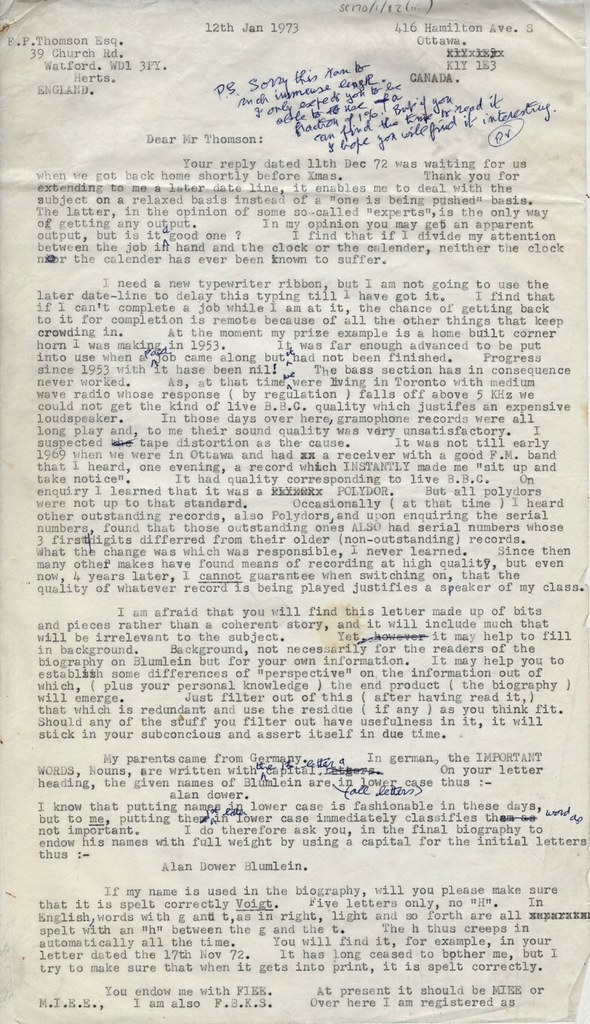 SC MSS 170 1 82 3 page 1
SC MSS 170 1 82 3 page 1 by
Round Person, on Flickr
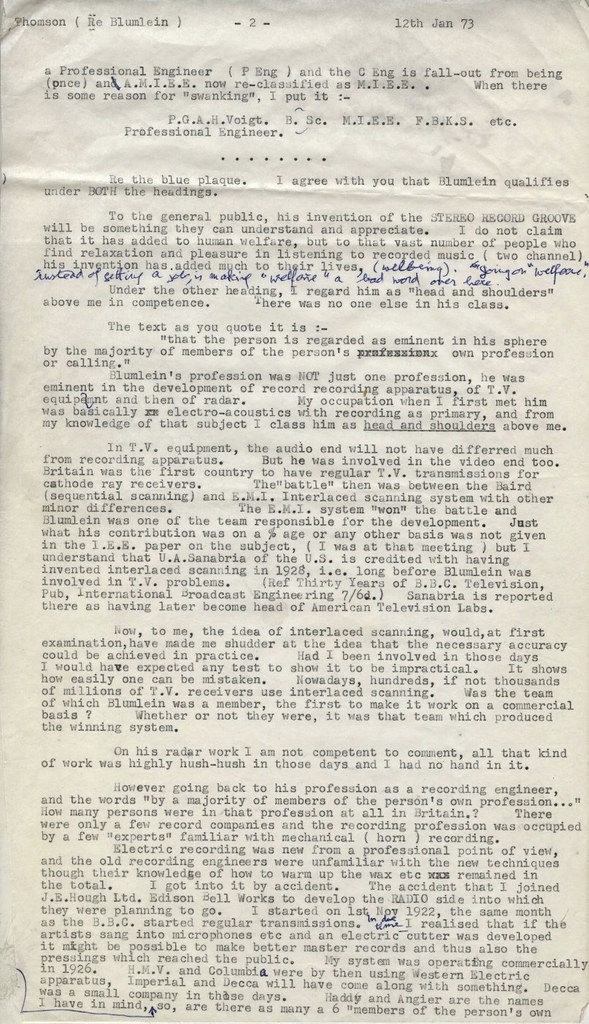 SC MSS 170 1 82 3 page 2
SC MSS 170 1 82 3 page 2 by
Round Person, on Flickr
 SC MSS 170 1 82 3 page 3
SC MSS 170 1 82 3 page 3 by
Round Person, on Flickr
 SC MSS 170 1 82 3 page 4
SC MSS 170 1 82 3 page 4 by
Round Person, on Flickr
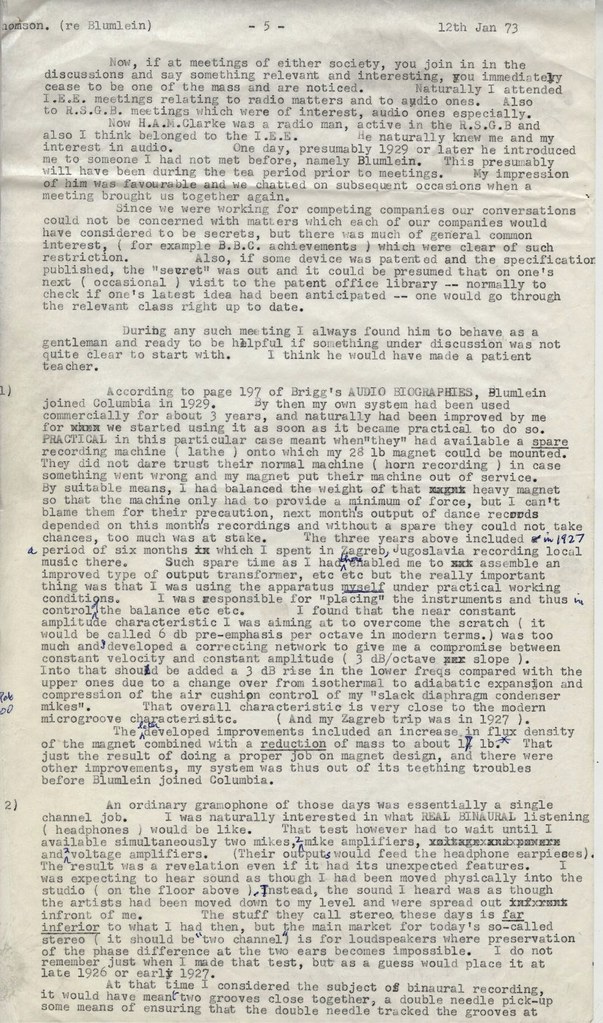 SC MSS 170 1 82 3 page 5
SC MSS 170 1 82 3 page 5 by
Round Person, on Flickr
 SC MSS 170 1 82 3 page 6
SC MSS 170 1 82 3 page 6 by
Round Person, on Flickr
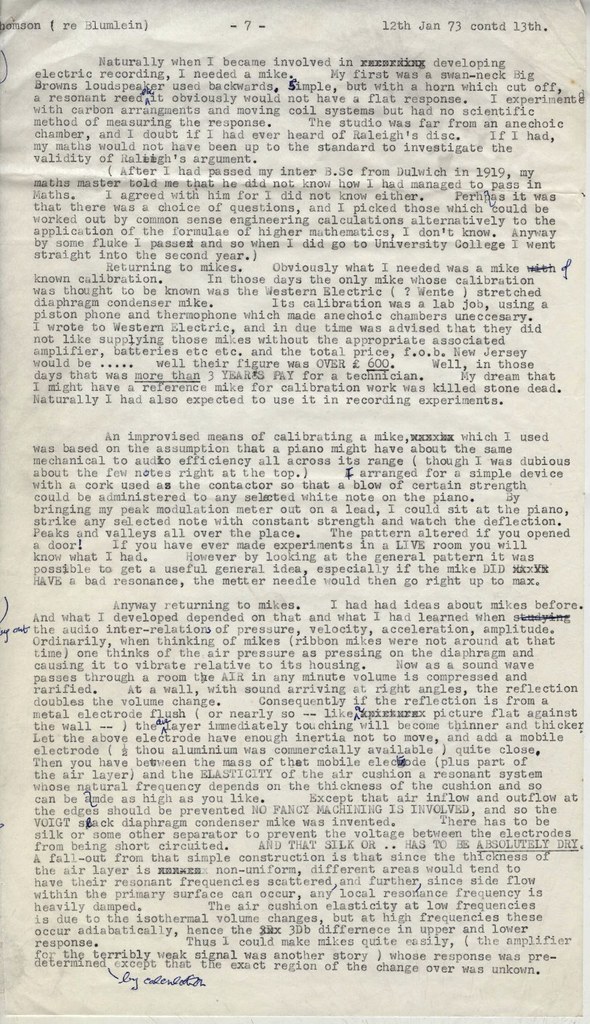 SC MSS 170 1 82 3 page 7
SC MSS 170 1 82 3 page 7 by
Round Person, on Flickr
 SC MSS 170 1 82 3 page 8
SC MSS 170 1 82 3 page 8 by
Round Person, on Flickr
 SC MSS 170 1 82 3 page 9
SC MSS 170 1 82 3 page 9 by
Round Person, on Flickr
 SC MSS 170 1 82 3 page 10
SC MSS 170 1 82 3 page 10 by
Round Person, on Flickr
 SC MSS 170 1 82 3 page 11
SC MSS 170 1 82 3 page 11 by
Round Person, on Flickr
 SC MSS 170 1 82 3 page 12
SC MSS 170 1 82 3 page 12 by
Round Person, on Flickr
 SC MSS 170 1 82 3 page 13
SC MSS 170 1 82 3 page 13 by
Round Person, on Flickr
 SC MSS 170 1 82 3 page 14
SC MSS 170 1 82 3 page 14 by
Round Person, on Flickr
 SC MSS 170 1 82 3 page 15
SC MSS 170 1 82 3 page 15 by
Round Person, on Flickr
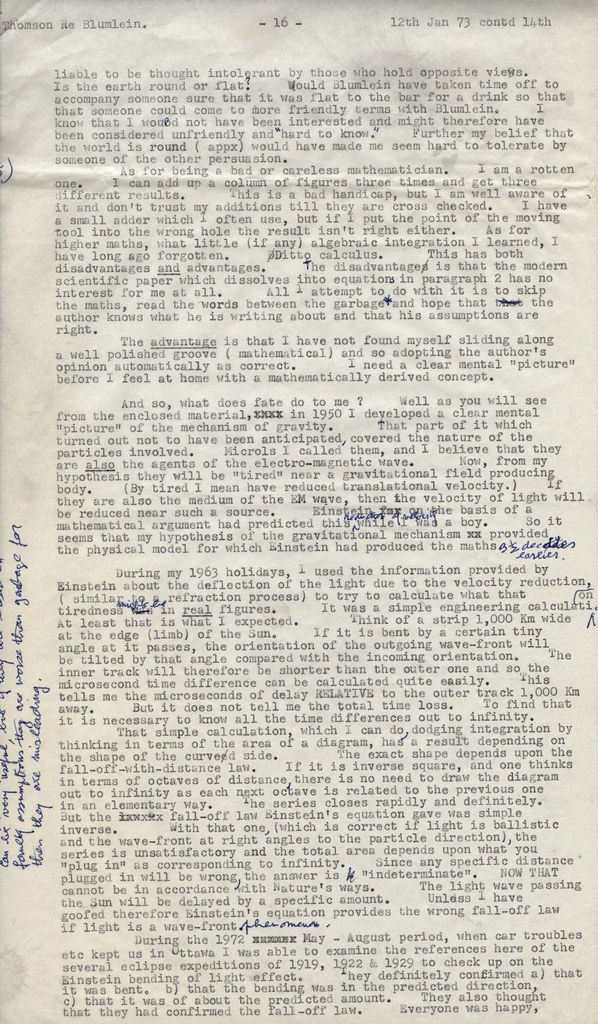 SC MSS 170 1 82 3 page 16
SC MSS 170 1 82 3 page 16 by
Round Person, on Flickr
 SC MSS 170 1 82 3 page 17
SC MSS 170 1 82 3 page 17 by
Round Person, on Flickr
 SC MSS 170 1 82 3 page 18
SC MSS 170 1 82 3 page 18 by
Round Person, on Flickr
 SC MSS 170 1 82 3 page 19
SC MSS 170 1 82 3 page 19 by
Round Person, on Flickr
 SC MSS 170 1 82 3 page 20
SC MSS 170 1 82 3 page 20 by
Round Person, on Flickr
2. What follows is the speech given to the British Sound Recording Association. This speech was recorded on tape in Canada and sent to England and played back at the meeting.
[Please see ACKNOWLEDGEMENT NO. 13 (above)].
 SC MSS 170 1 82 2 page 1
SC MSS 170 1 82 2 page 1 by
Round Person, on Flickr
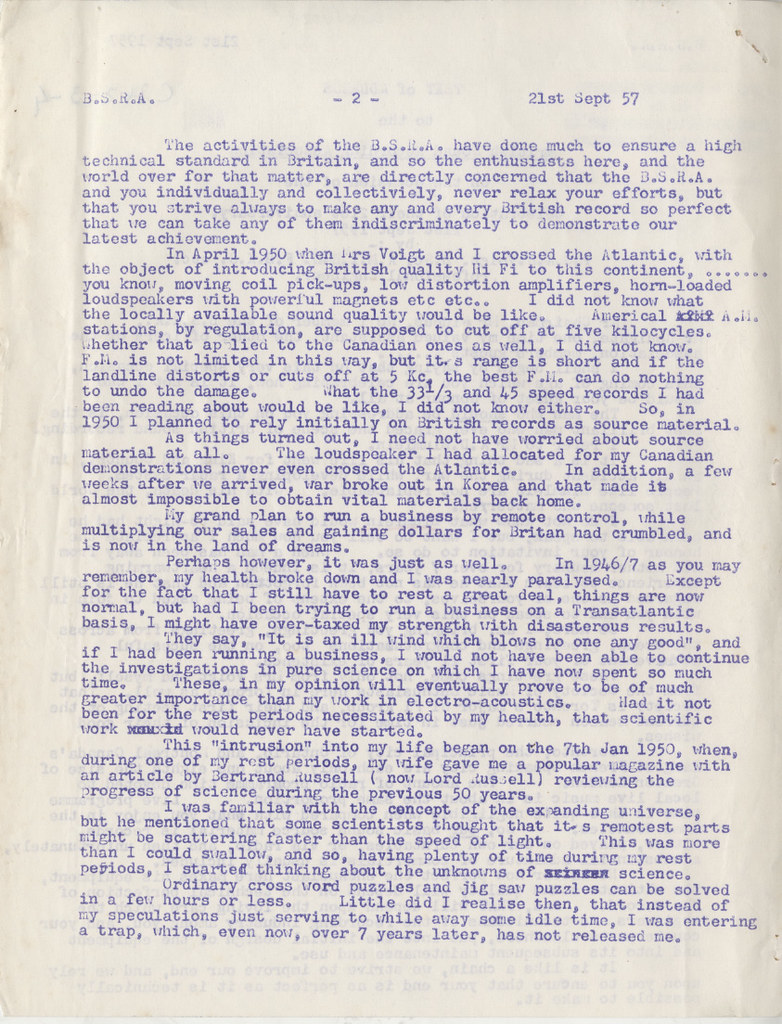 SC MSS 170 1 82 2 page 2
SC MSS 170 1 82 2 page 2 by
Round Person, on Flickr
 SC MSS 170 1 82 2 page 3
SC MSS 170 1 82 2 page 3 by
Round Person, on Flickr
 SC MSS 170 1 82 2 page 4
SC MSS 170 1 82 2 page 4 by
Round Person, on Flickr
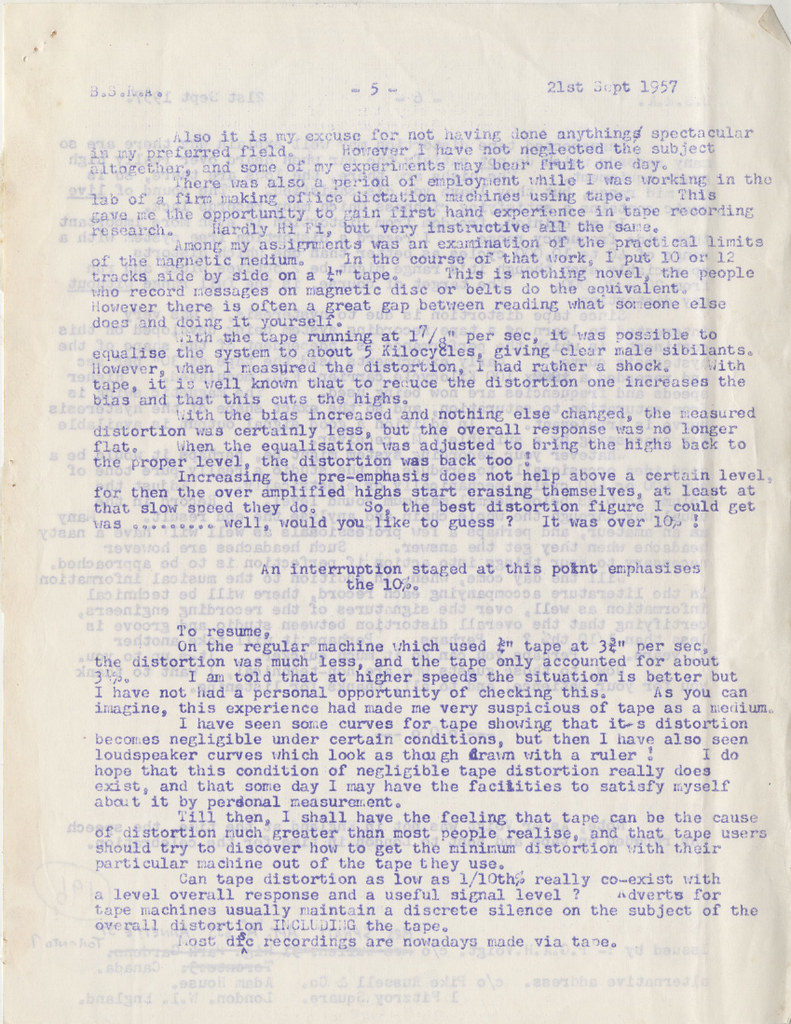 SC MSS 170 1 82 2 page 5
SC MSS 170 1 82 2 page 5 by
Round Person, on Flickr
 SC MSS 170 1 82 2 page 6
SC MSS 170 1 82 2 page 6 by
Round Person, on Flickr
3. What follows is the letter sent by Voigt to J.E. Wright, Librarian of I.E.E. It is dated 14 August 1969. In this letter Voigt sets out in great detail, the history of what he has been doing since 1950. It was posted from Canada. [Please see ACKNOWLEDGEMENT NO. 13 (above)].
 IET DEP 06 03 04 - Letter from PGAH Voigt to JE Wright 14 Aug 1969 - Page 1 (1)
IET DEP 06 03 04 - Letter from PGAH Voigt to JE Wright 14 Aug 1969 - Page 1 (1) by
Round Person, on Flickr
 IET DEP 06 03 04 - Letter from PGAH Voigt to JE Wright 14 Aug 1969 - Page 2
IET DEP 06 03 04 - Letter from PGAH Voigt to JE Wright 14 Aug 1969 - Page 2 by
Round Person, on Flickr
 IET DEP 06 03 04 - Letter from PGAH Voigt to JE Wright 14 Aug 1969 - Page 3
IET DEP 06 03 04 - Letter from PGAH Voigt to JE Wright 14 Aug 1969 - Page 3 by .
[url=https://flic.kr/p/CC8sbj]
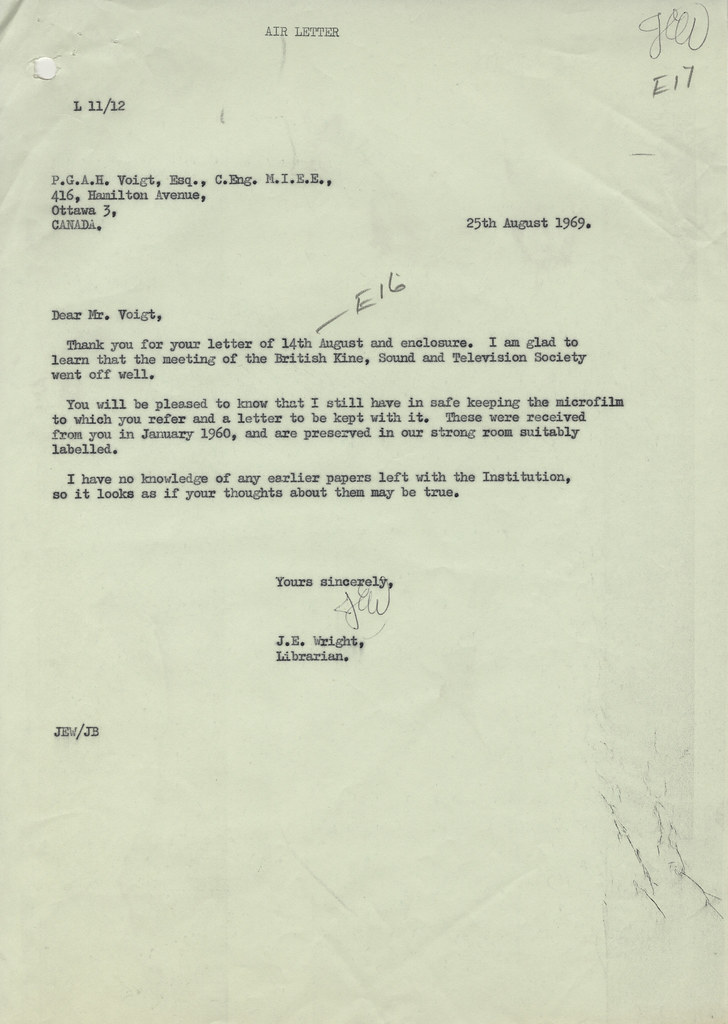 IET DEP 06 03 04 - Letter from JE Wright to PGAH Voigt 25 Aug 1969
IET DEP 06 03 04 - Letter from JE Wright to PGAH Voigt 25 Aug 1969 by
Round Person, on Flickr
APPENDIX 3
Dulwich College Archives (Extracts)
With kind permission of the Governors of Dulwich College.
CONTENTS
1. Postcard dated 15 December 1923 to the Alleyn Club
2. Dulwich College Register Serial Number 8680 (Questionnaire) issued 12.3. 1925
3. Dulwich College school records and syllabus
4. Letter to McC. Christison, 19 July 1957
1. Postcard
 _S871275
_S871275 by
Round Person, on Flickr
2. Dulwich College Register (Questionnaire)
 voigt
voigt by
Round Person, on Flickr
 voigt p2
voigt p2 by
Round Person, on Flickr
3.1 Handwritten entry No.8680 8536 (1915)
3.2 continued (later historical entry)
3.3 entry (PRINTED EDITION) Dulwich College Register
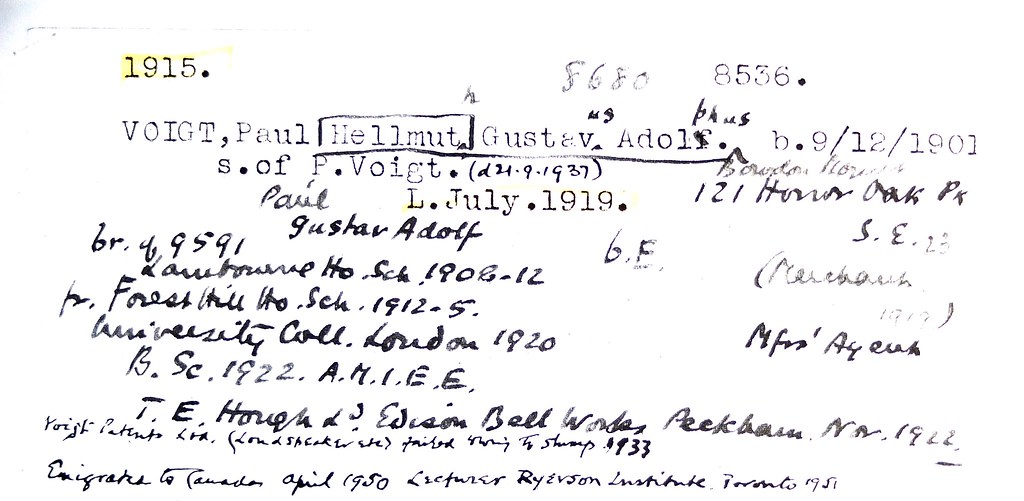 _DSF2037b
_DSF2037b by
Round Person, on Flickr
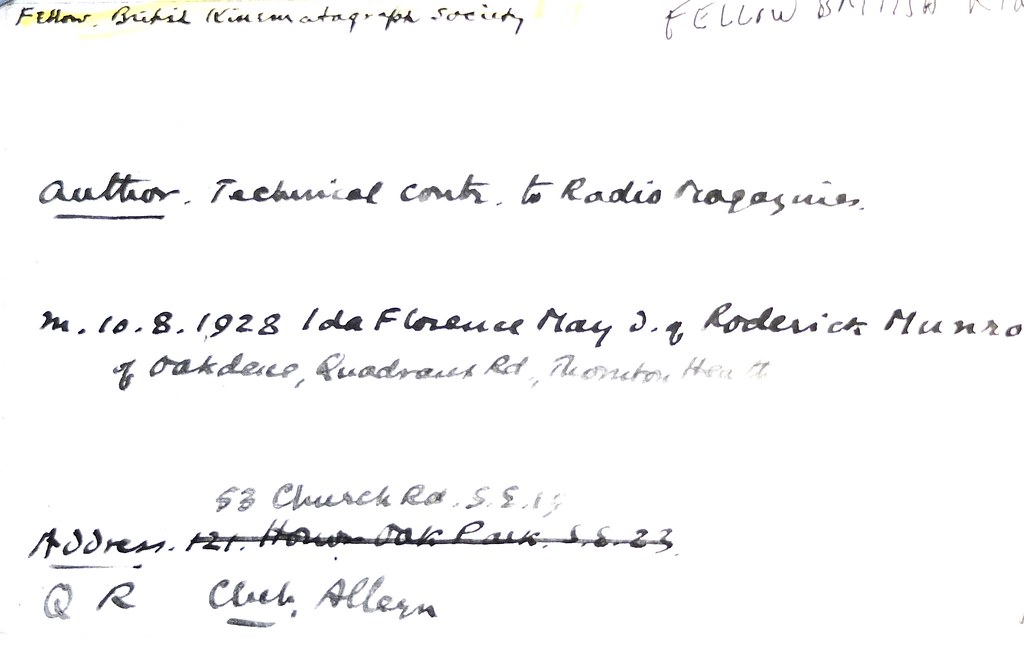 _DSF2038b
_DSF2038b by
Round Person, on Flickr
 _DSF2039a
_DSF2039a by
Round Person, on Flickr
3. Dulwich College school records and syllabus
 _DSF2071
_DSF2071 by
Round Person, on Flickr
 _DSF2072
_DSF2072 by
Round Person, on Flickr
 _DSF2074
_DSF2074 by
Round Person, on Flickr
 _DSF2075
_DSF2075 by
Round Person, on Flickr
 _DSF2076
_DSF2076 by
Round Person, on Flickr
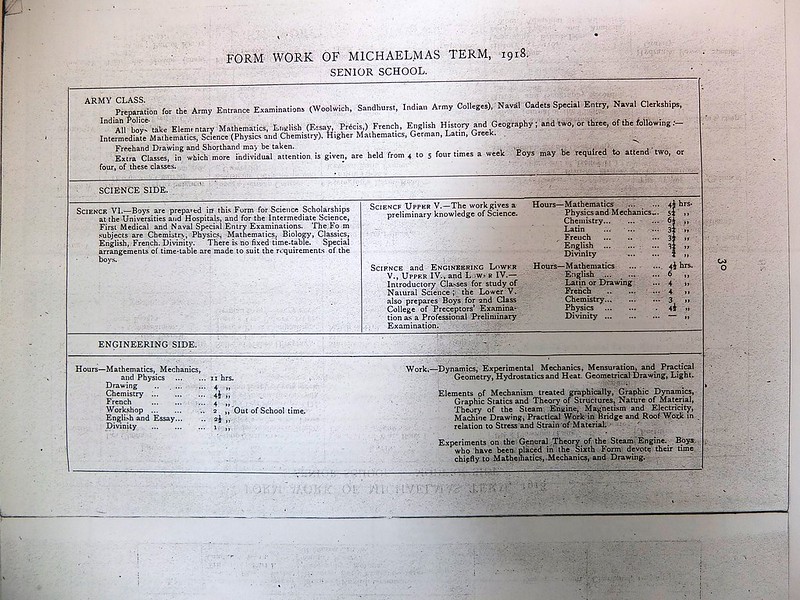 _DSF2077
_DSF2077 by
Round Person, on Flickr
4. Letter to McC. Christison, 19 July 1957
 _DSF2106
_DSF2106 by
Round Person, on Flickr
 _DSF2107
_DSF2107 by
Round Person, on Flickr
 _DSF2109
_DSF2109 by
Round Person, on Flickr




















































